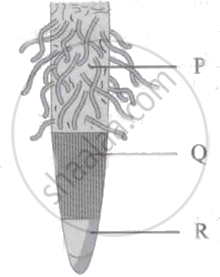Advertisements
Advertisements
Question
Name the technique and the property of plant cells that can help to grow somaclones of certain desired varieties of apple. Explain how somaclones of apple can be obtained in the lab so as to get the desired variety on a large scale.
Solution
The technique which helps to grow somaclones is called micro-propogation and the property of plant cells that help us to do so is totipotency.
Totipotency is the capacity to generate a whole plant from any cell/explants under sterile conditions in special nutrient media.
Plants that are genetically identical to original plants from which they are grown are called somaclones.
The somaclones of apples can be obtained in labs by following the below-mentioned steps:
- A small part of the apple plant can be taken out and grown in special nutrient media.
- This nutrient media should have all the components required for the growth of the plant, for example, salts, vitamins, minerals, amino acids, hormones, etc.
- All this needs to be done in a sterile environment in the laboratory.
- This would help us to obtain somaclones of the apple plant in a very short duration.
APPEARS IN
RELATED QUESTIONS
With advancements in genetics, molecular biology and tissue culture, new traits have been incorporated into crop plants. Explain the main steps in breeding a new genetic variety of a crop
Give two examples where micropropagation is commercially adopted
Identify labels P, Q, R in the given figure of root showing different regions.

To get a disease-free plant from a virus infected plant, which one of the following can be used as an explant in tissue culture?
The term ‘totipotency’ refers to the capacity of a ______.
To isolate protoplast, one needs ______.
Can gamma rays used for crop improvement programmes prove to be harmful for health? Discuss.
Why are plants obtained by protoplast culture called somatic hybrids?
Discuss how the property of plant cell totipotency has been utilised for plant propagation and improvement
Write a short note on callus culture.
